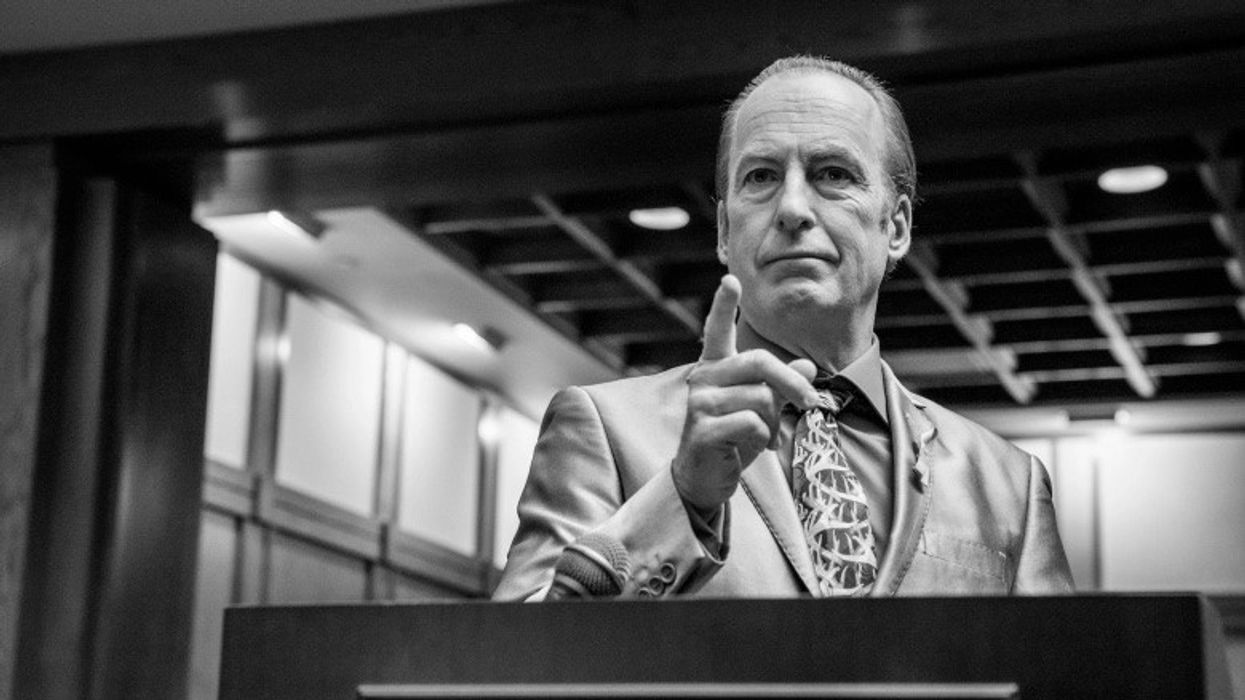How 'Better Call Saul' Delivers a Satisfying Ending with the Bookend Technique
Better Call Saul's final moments left us sobbing, showing us the power of the bookend technique.

The hurt is still fresh from the final episode of Better Call Saul.
(Spoilers to follow.)
In the final moments of the series, former spouses Jimmy McGill (Bob Odenkirk) and Kim Wexler (Rhea Seehorn) share one last on-screen cigarette in a visitation room in prison. The moment is bittersweet as Jimmy and Kim stand there, taking drags in silence, understanding where they stand in each other’s lives going forward.
After that series finale, Odenkirk, Seehorn, and series co-creator and showrunner Peter Gould talked to IndieWire about that final scene, and how we might have gotten a very different ending.

The ending of Better Call Saul
“It was the very last scene we shot on the series,” Seehorn said. “This is them at their best, even in a horrible place. They’re without artifice and without armor and sort of maskless to each other, which is the best part of their relationship, that they were able to be that for each other.”
Gould’s goal with that final image of the two leaning up against the visitation room wall was to create an honest moment between these two characters who have seen the best and worst of each other.
As Kim leaves the prison with Jimmy watching, the weight of the characters’ futures crushed us.
But this scene almost didn’t happen.
“I went back and forth on that [shot] for a while,” Gould said. “Then ultimately, having watched them both, I felt like it was right. It felt more honest, to end with the two of them apart rather than the two of them together. But those were all things that were discussed and struggled with in the editing, more so than most episodes.”
One of the show’s original ending ideas still featured a tender moment between Jimmy and Kim but under different circumstances. In Gould’s “perfect ending,” Jimmy and Kim would have a moment before he goes to prison. The last scene would have been Jimmy sitting in prison by himself, thinking about everything that happened.
“In the original version, he was fearful about what was going to happen to him in prison, and it was a lot about the fear. This is a very different scene. It’s mostly about connection and a wistful connection,” Gould said.
The smoking moment is a nod to the show’s introduction to Jimmy’s and Kim’s relationship as a potential team in the show’s pilot episode, bookending the series with a silent drag from the same cigarette. Gould wanted the mirroring moment to act as a consequence of a character’s choice rather than a storytelling device.
“I did watch the opening scene. Hopefully, it’s not excessively cute on our part because I think the characters are doing it on purpose. It’s a sign to each other that there’s still something between them, that there always was,” Gould said.
The show's DP, Marshall Adams, played into the callback as well, adding a slash of light that crossed the back of the wall. The slash of light goes in the opposite direction than it did in the pilot, paying homage to the original composition while showing the end journey of the characters.

The post-Saul world is back-and-white but is slightly invaded by the glow of Kim and her cigarette. When she lights the cigarette, a tiny bit of color from the glow of the ash burns through the two-toned world.
“We made that color very subtle,” Gould said. “This is the one bit of color in his world, the relationship with Kim such as it is and that she’s the one person who sees him as he is and as he was. It just felt right.”
Odenkirk and Seehorn used their instincts to bring things full circle, closing the chapter of this six-season long story.
“It felt very natural to me. I knew that I was duplicating that scene without making much of an effort,” Odenkirk said.
The opening and closing shots of a series or a film can be powerful, setting the mood for the story and leaving the audience with the memory of what once was and what can no longer be. It’s a simple trick that has a massive effect on the viewer. Bookending the entire series showcased an important relationship that affected the motives of the characters throughout the series.
It is a callback with an emotional weight that leaves us longing for what could never be while delivering a satisfying ending.
What did you think about the ending of Better Call Saul? Let us know in the comments!
Source: IndieWire

 Richard Gere and Uma Thurman in 'Oh, Canada' via Kino Lorber
Richard Gere and Uma Thurman in 'Oh, Canada' via Kino Lorber  Uma Thurman in 'Oh, Canada'via Kino Lorber
Uma Thurman in 'Oh, Canada'via Kino Lorber 









